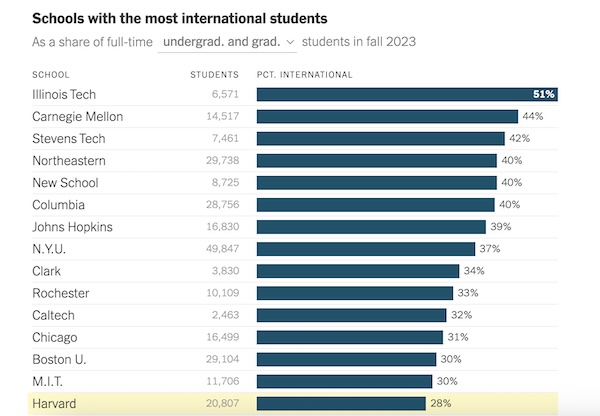Facebook, X (formerly Twitter), and other social media platforms may soon cost American universities dearly. US Secretary of State Marco Rubio has ordered US embassies worldwide to halt student visa interviews while the Trump administration considers stricter screening of applicants’ social media activity. The move follows a crackdown on pro-Palestinian demonstrations in US universities, aimed at curbing anti-Semitism.
Rubio announced on Wednesday that the Trump administration would work to “aggressively revoke” visas of Chinese students, including those with ties to the Chinese Communist Party or who are studying in “critical fields”. China has the second largest number of foreign students in America after India, though their numbers declined about four per cent to 277,000 in 2024, according to Bloomberg.
Rubio told reporters in late March that more than 300 visas—many issued to international students—had already been revoked, with more cancellations underway. The growing wariness about international students, after some of them participated in the pro-Palestinian demonstrations, is likely to hit universities hard, both financially and academically.
International students’ contributions
International students are a vital pillar of American higher education. According to NAFSA, the world’s largest nonprofit dedicated to international education, they contributed $43.8 billion to the US economy during the 2023–2024 academic year and supported 378,000 jobs. More than half of these jobs were in higher education itself, while the rest were in sectors indispensable to students such as housing, dining, and retail.
Unlike many American students who receive financial aid or scholarships, international students frequently pay full, unsubsidised tuition. The revenue generated from these students often plays a vital role in subsidising the education of domestic students and supporting broader university budgets.
International student numbers
In the 2023-2024 academic year, over 1.1 million foreign students chose the US for their studies, with India leading the numbers, followed closely by China.

Several top American universities host thousands of international students, including prestigious institutions such as Carnegie Mellon, Northeastern, New School, Columbia, Johns Hopkins, New York University, Boston University, University of Chicago, MIT, University of Pennsylvania, Cornell, Duke, Stanford, Princeton, Yale, Northwestern, University of Southern California, Washington University in St Louis, University of Michigan, University of Illinois, Georgia Tech and Georgetown. Notably, Harvard, where 26% of its 20,000 students are international, has gone to court against a Trump administration decision barring it from enrolling foreign students.
US gains from foreign talent
The contributions of international students go far beyond economics. They make up only 5.9% of the 19 million students pursuing higher education in America, But a staggering 56% of the international students are enrolled in science, technology, engineering, and mathematics (STEM) studies, considered essential to growth and innovation. Many serve as teaching and research assistants, and their work fuels innovation in high-demand areas such as computer science, data analytics, and engineering.
A look at The Times Higher Education World University Rankings 2025 confirms the importance of international students. Seven of the top 10 universities are American — MIT, Harvard, Princeton, Stanford, Caltech, Berkeley and Yale (the others being the top-ranked Oxford, the fifth-placed Cambridge, and Imperial College London in ninth place) and all of them score high marks for “international outlook”, that is, the presence of international students and staff.
Former Reserve Bank of India governor Raghuram Rajan, now a finance professor at the University of Chicago’s Booth School of Business, says America has gained from the inflow of foreign talent. “The Sergey Brins of the world came as students and did wonders for the US economy,” he said, referencing the Google co-founder. Other technology giants who began as international students include Sundar Pichai of Alphabet, Satya Nadella of Microsoft, and Elon Musk of Tesla and X.
America also has Nobel laureates who first arrived as foreign students before becoming US citizens and winning top scientific honours. They include the economist Abhijit Banerjee from India, biochemist Katalin Karikó from Hungary, physicist Shuji Nakamura from Japan, and chemist Rudolph Marcus from Canada, among others.
An American education helped them thrive. In return, their discoveries and leadership brought prestige to US institutions and benefits to the global community.
As Raghuram Rajan, an MIT PhD holder himself, told Bloomberg TV, “To some extent, the problem is the universities haven’t made the case that they are so central to US growth.”
Indeed, higher education has firmly established itself as one of America’s top exports, ranking as the 10th-leading export according to the US Bureau of Economic Analysis, reported CEOWorld Magazine in August 2024. Curbing the flow of foreign students to America will not only hurt the economy but also deprive it of the diverse foreign talent that has been central to US growth and global leadership for decades./TISG
Featured image by Freepik (for illustration purposes only)

